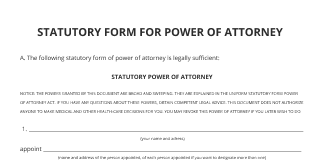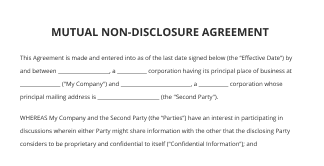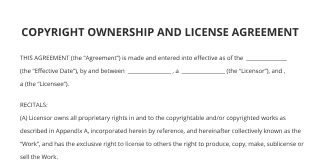Colabora Fácilmente En La Plantilla De Factura De Fisioterapia Para Personal Con airSlate SignNow
Impulsa tu negocio con la solución de firma electrónica de airSlate SignNow
Agrega tu firma legalmente vinculante
Integra mediante API
Envía documentos condicionales
Comparte documentos mediante un enlace de invitación
Ahorra tiempo con plantillas reutilizables
Mejora la colaboración en equipo
Vea las firmas electrónicas de airSlate SignNow en acción
Soluciones de airSlate SignNow para una mayor eficiencia
Las reseñas de nuestros usuarios hablan por sí mismas






Por qué elegir airSlate SignNow
-
Prueba gratuita de 7 días. Elige el plan que necesitas y pruébalo sin riesgos.
-
Precios honestos para planes completos. airSlate SignNow ofrece planes de suscripción sin cargos adicionales ni tarifas ocultas al renovar.
-
Seguridad de nivel empresarial. airSlate SignNow te ayuda a cumplir con los estándares de seguridad globales.

Aprende cómo optimizar tu proceso en la plantilla de factura de fisioterapia para Personal con airSlate SignNow.
¿Buscas una forma de simplificar tu proceso de facturación? No busques más, y sigue estas sencillas pautas para colaborar sin esfuerzo en la plantilla de factura de fisioterapia para Personal o solicitar firmas en ella con nuestro servicio fácil de usar:
- Crea una cuenta iniciando una prueba gratuita e inicia sesión con tu información de inicio de sesión por correo electrónico.
- Sube un archivo de hasta 10MB que necesites firmar electrónicamente desde tu portátil o el almacenamiento en línea.
- Continúa abriendo tu factura cargada en el editor.
- Ejecuta todos los pasos necesarios con el archivo usando las herramientas de la barra de herramientas.
- Haz clic en Guardar y Cerrar para mantener todas las modificaciones realizadas.
- Envía o comparte tu archivo para firmar con todos los destinatarios necesarios.
Parece que el proceso de plantilla de factura de fisioterapia para Personal se ha vuelto más fácil! Con el servicio fácil de usar de airSlate SignNow, puedes cargar y enviar facturas para firmas electrónicas fácilmente. No más impresión, firma manual y escaneo. Comienza la prueba gratuita de nuestra plataforma y simplifica todo el proceso para ti.
Cómo funciona
Funciones de airSlate SignNow que los usuarios adoran
¡Obtenga firmas legalmente vinculantes ahora!
Preguntas frecuentes physical therapy invoice template
-
¿Cuál es la forma de editar mi plantilla de factura de fisioterapia para Personal en línea?
Para editar una factura en línea, simplemente sube o selecciona tu plantilla de factura de fisioterapia para Personal en la plataforma de airSlate SignNow. Una vez cargada, puedes usar las herramientas de edición en el menú de herramientas para hacer los cambios necesarios en el documento.
-
¿Cuál es la mejor plataforma para usar en los procesos de plantilla de factura de fisioterapia para Personal?
Considerando diferentes plataformas para los procesos de plantilla de factura de fisioterapia para Personal, airSlate SignNow es reconocido por su diseño fácil de usar y sus herramientas extensas. Simplifica todo el proceso de cargar, modificar, firmar y compartir documentos.
-
¿Qué es una firma electrónica en la plantilla de factura de fisioterapia para Personal?
Una firma electrónica en tu plantilla de factura de fisioterapia para Personal se refiere a una forma segura y legalmente vinculante de firmar formularios en línea. Esto permite un proceso de firma sin papel y eficiente, además de ofrecer medidas de seguridad adicionales.
-
¿Cuál es la forma de firmar mi plantilla de factura de fisioterapia para Personal en línea?
Firmar tu plantilla de factura de fisioterapia para Personal electrónicamente es simple y sin esfuerzo con airSlate SignNow. Para comenzar, sube la factura a tu cuenta haciendo clic en los botones +Crear -> Subir en la barra de herramientas. Usa las herramientas de edición para hacer los cambios necesarios en el documento. Luego, presiona el botón Mi Firma en la barra de herramientas y selecciona Agregar Nueva Firma para dibujar, subir o escribir tu firma.
-
¿Puedo crear una plantilla específica de factura de fisioterapia para Personal con airSlate SignNow?
Crear tu plantilla de factura de fisioterapia para Personal con airSlate SignNow es un proceso rápido y sencillo. Simplemente inicia sesión en tu cuenta de airSlate SignNow y haz clic en la pestaña Plantillas. Luego, selecciona la opción Crear plantilla y sube tu archivo de factura, o selecciona uno existente. Una vez modificado y guardado, puedes acceder y usar fácilmente esta plantilla para futuras necesidades eligiéndola desde la carpeta correspondiente en tu Panel de control.
-
¿Es seguro compartir mi plantilla de factura de fisioterapia para Personal a través de airSlate SignNow?
Sí, compartir formularios a través de airSlate SignNow es una forma segura y confiable de colaborar con colegas, por ejemplo, al editar la plantilla de factura de fisioterapia para Personal. Con capacidades como protección con contraseña, seguimiento de auditoría y cifrado de datos, puedes confiar en que tus archivos permanecerán confidenciales y protegidos mientras se comparten en línea.
-
¿Puedo compartir mis archivos con colegas para colaborar en airSlate SignNow?
¡Por supuesto! airSlate SignNow ofrece varias opciones de trabajo en equipo para ayudarte a colaborar con colegas en tus documentos. Puedes compartir formularios, definir acceso para modificación y visualización, crear Equipos y rastrear los cambios realizados por los miembros del equipo. Esto te permite colaborar en tareas, reducir esfuerzos y simplificar el proceso de aprobación de documentos.
-
¿Existe una opción de plantilla de factura de fisioterapia para Personal gratuita?
Existen muchas soluciones gratuitas para la plantilla de factura de fisioterapia para Personal en la web, con varias restricciones en firma, compartición y descarga de documentos. airSlate SignNow no tiene un plan de suscripción completamente gratuito, pero ofrece una prueba gratuita de 7 días que te permite probar todas sus capacidades avanzadas. Después, puedes elegir un plan de pago que satisfaga completamente tus necesidades de gestión de documentos.
-
¿Cuáles son las ventajas de usar airSlate SignNow para facturación en línea?
Usar airSlate SignNow para facturación en línea acelera el procesamiento de documentos y reduce la posibilidad de errores humanos. Además, puedes rastrear el estado de tus facturas enviadas en tiempo real y recibir notificaciones cuando hayan sido vistas o pagadas.
-
¿Cómo envío mi plantilla de factura de fisioterapia para Personal para firma electrónica?
Enviar un archivo para firma electrónica en airSlate SignNow es rápido y sencillo. Simplemente sube tu plantilla de factura de fisioterapia para Personal, añade los campos necesarios para firmas o iniciales, luego personaliza el texto para tu invitación a firmar e ingresa las direcciones de correo electrónico de los destinatarios según corresponda: Destinatario 1, Destinatario 2, etc. Ellos recibirán un correo electrónico con una URL para firmar el documento de forma segura.
Lo que dicen los usuarios activos — physical therapy invoice template
Búsquedas relacionadas con physical therapy invoice template
Physical therapy invoice template for Personnel
on this episode of the ask Mike Ronald shell we talk about how we develop our treatment plans and our program strategies for our patients and clients the ask Mike Reinhold show helping people feel better move better before better [Music] before we get to the podcast I wanted to make sure you knew about my free online course on the introduction to performance therapy and training if you want to learn how to get started optimizing and enhancing performance this is the course for you head to Mike Randall comm / performance sign up today welcome back everybody the latest episode of the ask Mike Brown show we're up at champion Pt performance Mike's give it up Dan Pope Dave Tilley Lenny Macrina answering all your physical therapy fitness sports performance career anything you guys want to talk about head erect head to Mike Ronald calm I click on that podcast link and ask us more great questions today as usual we have a great group of clinical students with us today that help us with the questions Lenny who do we have today you have a plethora of students bright red look at me we have em in Georgia from trying University we have ryan johnson in the middle here wearing his blue this Friday is Thursday blue from winston-salem State University most of our listeners listening to this we have Andrew King from Harvard University what's the nickname upon you are real hard you learn like that much then what's there my mascot the Hawks the boring that's what I meant yeah and we also have Austin riffraff from Franklin Pierce from Aladdin from the movie Aladdin the home the one in Arizona the one-day establishment all right what do we have for a question today who's up we got from Sarasota I love the content on this podcast and thanks for taking my question I'm a DBT student about to graduate in a few months I feel that my school has done a great job teaching how to identify and diagnose pathology but is not given as much when it comes to treatment and program do you have any advice resources examples etc on how I can better understand how to program treatment for a person coming to PT alright that's a pretty common question I bet right like so done a really good job with diagnosis especially medical diagnosis now too I think we're getting a better understanding of that as we're getting into the doctor to physical therapy and direct access and all that stuff so a really good job with Diagnostics but now you're confused with how to develop a treatment plan students quickly I don't know King what do you think do you agree with this question like how do you feel do you feel like you are prepared we just suck on TI the king the king the king what are you I mean do you guys feel like my only go up and go in order there was anybody prepared well for treatment I think our school did a great job preparing us why go ha cuz it was a good idea of what to do like initially versus advanced-intermediate so kind of where to start what patients can tolerate and how to progress as and what to look for to progress that so that sounds like that sounds like it's pretty good right there understanding I think that's the basics of treatment is understanding like how to start where to start how to progress I like that that's a good old look like you guys I agree with the question like my school folks Allah don't like the diagnosis did a great job and we learned the basic like started interventions but after that it wasn't where I learned all mine was like the clinical experience less bless of actual in class besides like your basic starter so that's a good point so maybe maybe like you know this is another good reason to make sure you have good clinicals what about you guys I think just my experience as a strength coach for the last four years is that probably helps too because you already understood how to develop things like strength and power mobility yeah yeah and I think our program which is heavy on like exercise prescription stuff like that and we're able to take like courses for advanced interventions or learn more programming and things like that I think of sports elective too so I think that's part of the problem is we don't have like a minimum basis in college on like what you need to learn right so I think a lot of people are very good at Diagnostics and you spend a lot of time with that and then with experience you get better with with treatments right so all right where do we start I guess is the question on on how to help somebody like where do you go from a new grad on how do you figure out what you do with treatments you know I mean I don't know I get we have a million directions we can go because anybody have initial advice you want to start with and then we'll go from there I'll start a little bit I think part of it is that you have to have a copulation in mind right so for us we all have specific issues so if you have like six year old that doesn't want to get back to anything in particular that maybe any old intervention will help for the low back pain if you have someone's low back pain that's trying to factor let's say a you know parallel to yourself along those lines there's a very specific set of exercises we start with and work your way up over the course of time at least for me and my nation my population I think Evan kind of hit it really well I actually found that most of students I've worked with in the past are not very good at exercise prescription and they're very good at kind of the basic stuff when they have to advance they just have no idea how to do that right so for me I think it's really important to learn the basis of strength conditioning right and learn how to work with people from that perspective so any resource from from there would be will be helpful I think right so I I guess you know and that's that's maybe one approach if you're feeling insecure about your knowledge on how to help you with that is let's start with that maybe instead of being so diagnostic specific what you do is you start to like think in your mind all right what how do I help people well we have to work on mobility we have to work on strength we have to work on there on muscular control we have to work on in turns of power or whatever maybe you have all these domains right and you start thinking about each one of these what do I have four strategies to improve mobility improve strength improve power right and then seek each one of those kind of buckets out maybe that's like a good way to start based on what Dan said yeah I would agree I think looking back onto what I was kind of most insecure about was the initial treatment or plan of care after like somebody has it going to injury so I really didn't know how to help like somebody was like a post-op joint for me or stuff I felt a little bit like how do I touch like I'm gonna hurt you and I fought protocol stuff so there was like that piece of the medical side but then I have didn't have a great mount the foundation for strength conditioning coming out of school and so I felt like that was where people were like you know necessarily have surgery but they were hurting me Strank programs I didn't know how to program well so for me it was just finding mentorship for both of those things cuz I knew that that was what I was kind of we cast weak at mostly so finding people online I think is really important if you don't have good finding people online like I followed you guys course and I felt like I didn't have that a neat like immediate post-op problem like solved with my clinical education so that was very helpful in line and then strengthen I think I just shadowed strength coaches yeah and you kind of learned that way a little bit do that I you know I you know I guess when it comes down to is a lot of times is like we get caught up in the diagnosis and not what's right in front of you and you start saying well what do I want to do for treatment for patella femoral pain instead of taking a step back and just kind of like figuring out what's wrong with the person right and that's kind of like our approach a champion which we try to do is we try to look at them more holistically and then just kind of come up with a gun checklist of things they need so now some say that they definitely all starts with your assessment your evaluation part of you know the evaluation assessment that we use is like a moving screen and I think we all kind of use it to find out what they can tolerate in terms of what exercises they're going to be able to tolerate so there's a squat and lunge step down things like that so if someone comes in with knee pain and they can tolerate a squat and they can't tolerate a single leg step down and I'm probably gonna have them do some squats and build up to the single I step down so I think that helps guide your treatment plan you find out what they can tolerate day one and kind of build upon that and you know progress them over time basically so I plan I think to you know the point of what Mike said here is that we have like a systemized approach err of how we look at people right and when do when somebody comes to us with likes a shoulder pain right we're going to evaluate the shoulder pain and try to figure out if we can understand why and come up with a diagnosis but that doesn't mean that that is every we do that is part of it the other thing we do is we try to figure out what suboptimal that maybe put them in that position right so maybe things that we can increase their functional capacity not just perhaps work on their shoulder pain right so it's almost like we have like two buckets of treatments hairs let's help with their their pain right let's that the reason why they're here their injury and the precautions and and the strategies that are involved with that and that's kind of what you learn in school right and then the secondary part is okay but let's take a big step back all right they have knee pain all right well I know there's things I can do to help them with their pain okay good well what else can I do oh they can't do a step down why can't they do a step down what happens and then you you figure out a strategy with that oh then I'll have any ankle dorsiflexion oh they they're their hips are weak or whatever it may be right and you find these things you create this checklist of suboptimal things and then at the end you take a step back and you figure out what you have right and when you're young and your student you can have a crazy checklist there's gonna be things all over the place right you're gonna have all these things then what you need to do is just figure out like what's the most impactful things what's the thing that is gonna give the most bang for the buck initially and start with that and I think that's kind of like our big strategy anybody anybody like I think that's a good strategy to learn what about when it comes into like the actual treatment what do you guys do for you know your programing do you have anything specific you guys want to add but I just want to add that I was fortunate when I did my student it sounds like he's a steward or she's a student right like already in a DPG program and probably going out on clinicals to make sure you set your clinicals up at spots that historically have probably a bigger staff when you can bounce ideas off different pts and just a staff that is respectful that has a you know has a grouping of pts that you really look up to and are known and they're you know find their facility are known in their community because I was fortunate I got I did an internship at HealthSouth with my guy Kevin Wilk and probably ten other pts that I could bounce ideas off of and and get in their minds and pick their brains and just observe from a distance what they're doing I think that was very helpful that's how I got a lot of my base of exercise was just watching other pts everybody son's hockey cats each other and everybody's doing the same stuff because it's you just follow what the other pcs are doing in your facility so as a student you go on your internships you got to have that in your head that that's one of your goals is to get as many exercises under your you know in your mind and in your notebook further your future so I would definitely you know try to really do that I think these guys are hopefully doing that - they just observing all five of us as we go and hopefully they are just putting you know little notes in their head mental notes of what they could do for their patients in the future so that's one strategy that I've used I'm always copying dad whatever dad does I do of course yes I was gonna go back to what Mike was saying about the program I think this is a little bit challenging because if you're trying to work with an athlete that once get back to a higher level right let's say I have a kilise tendon problems if you look at some of the killings tenon literature it says okay do some sort of Achilles tendon strengthening somewhere between twice a day and like every other day right so I think what happens is that you get a pretty good idea of what the baseline should be right but the the high level stuff is what's challenging for physical therapist to figure out how to get back to some program perspective what you kind of said is figure out the needs so this person won't be able to run five times a week okay great that's awesome five times a week 30 minutes right now we're doing three days a week where the calf raises right how do i bridge that gap so you know maybe like three months online I'm running five days a week and then you start working backwards and just progressing them slowly over the course time and that's probably been the way I've done most of my programming to help people get to a higher level I think that's great as a PT we often focus on what to do right now based on their limitations and what we don't think of as the end right so Dan saying start with the end in mind and then figure out a plan that builds them there I like that I think the only other thing I would add you know is that you know we we have a really systemized approach on how we work with people here we've done this over years because we figured out the steps it takes to help people get better so you know yes like a rotator cuff tear or Achilles tear something you're gonna have very specific things you do but generally for people with pain that kind of come in and they don't have like a specific type diagnosis or pathology you just have hip pain knee pain shoulder pain whatever it may be right we we follow a systemized approach and what we do is we try to break it down into three things we talked about this a lot this isn't our champion performance certification thing but it's mobility control and low right and that's how we program when you just base it off those three things all the time and it goes in that order and they overlap right but we have to say ok what mobility restrictions they have that we need to address great once that's kind of tackled or at least we're working on that what do we need for control and for control this is like the typical physical therapy right it's the isolated exercises like maybe you have an isolated weakness of this muscle they need dynamic Stability of this joint they have neuromuscular control deficits of this right that's control and then the third is then they have to load and that's what we load the movement patterns that they need to get back into so when in doubt come up with their checklist of things that are suboptimal and then can follow that progression mobility control and load and when you do that that's almost like your your blueprint to develop a program for anybody right it's actually easy to follow a post-operative protocol right because it kind of lays it out for you it's the person that comes in with shoulder pain you know you can help them get out of their pain and then send them on their way but they're probably gonna come back into pain because you didn't really fix the underlying issues that they have with them and that's how we kind of tackle those programs so it's gonna take time it's going to take experience but I think the more you practice that the more the more you should get better at that so great question another good one if you have anything like that just head to Mike Ronald comm and click on that podcast link and you can fill out the form and we'll see on the next episode
Show moreObtén más para physical therapy invoice template
- Plantilla de factura veterinaria para fabricación
- Plantilla de factura veterinaria para Servicios de construcción
- Plantilla de factura veterinaria para organizaciones deportivas
- Plantilla de factura veterinaria para farmacéuticas
- Plantilla de factura veterinaria para Recursos Humanos
- Plantilla de factura veterinaria para RR.HH.
- Plantilla de factura veterinaria para entretenimiento
- Plantilla de factura veterinaria para Educación
Descubre otros physical therapy invoice template
- Legalidad de la Firma Electrónica para Inventario en ...
- Legalidad de la Firma Electrónica para Inventario en ...
- Comprendiendo la Legalidad de las Firmas Electrónicas ...
- Desbloquea el Poder de la Legalidad de la Firma ...
- Legalidad de la Firma Electrónica para la Seguridad en ...
- Legalidad de la Firma Electrónica para la Seguridad en ...
- Asegurando la Legalidad de la Firma Electrónica para ...
- Legalidad de la Firma Electrónica para la Seguridad en ...
- Asegurando la Legalidad de la Firma Electrónica para ...
- Desbloquea el Poder de la Legalidad de la Firma ...
- Asegurando la Legalidad de la Firma Electrónica para ...
- Desbloquea el Poder de la Legalidad de la Firma ...
- Desbloqueando la Legalidad de la Firma Electrónica ...
- Asegurando la Legalidad de la Firma Electrónica para ...
- Desbloquea el Poder de la Legalidad de la Firma ...
- Legalidad de la Firma Electrónica para I+D en los EAU ...
- Asegurando la Legalidad de la Firma Electrónica para ...
- Eleva el Cumplimiento de Investigación y Desarrollo ...
- Desbloqueando el Poder de la Legalidad de la Firma ...
- Entendiendo la Legalidad de la Firma Electrónica para ...






























